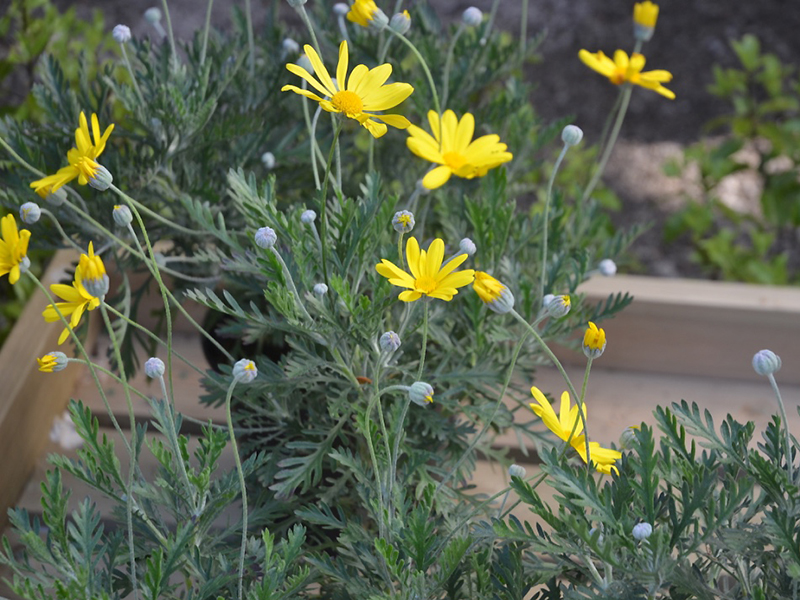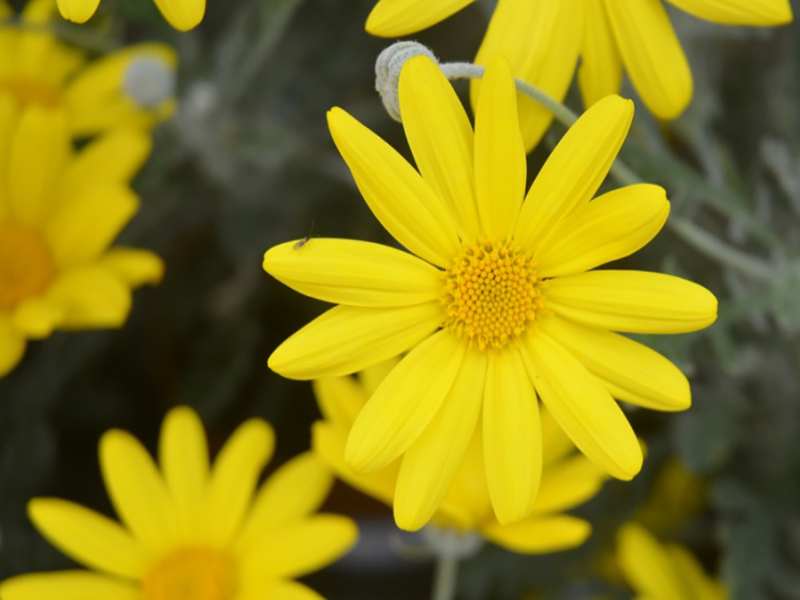Euryops pectinatus (Yellow Bush Daisy)
Botanical Information
| Family | Asteraceae |
| Genus | Euryops |
| Species | pectinatus |
| Category | Perennials, Tropicals |
| Origin | Southwestern cape of South Africa. |
Details
| USDA Hardiness Zone | 9a - 9b |
| USDA Hardiness Ref. | |
| Canadian Hardiness Zone | 9a |
| Canada Hardiness Ref. | |
| RHS Hardiness Zone | H3 |
| RHS Hardiness Ref. | |
| Temperature (°C) | -5 to 1 |
| Temperature (°F) | 23 - 34 |
| Height | 0.5 - 1.5 m |
| Spread | 0.5 - 1 m |
| Growth | Slow |
Description and Growing Information
| General Description | The yellow bush daisy is a South African shrubby perennial bearing bright yellow flower heads with attractive, narrowly divided leaves. |
| ID Characteristic | Pinnately cut, hairy, grey leaves topped with yellow daisy-like blooms. |
| Landscape | Widely used as a garden plant, especially in urban areas, because of its hardiness and repeat flowering. |
| Propagation | By seed or by rooting softwood cuttings. |
| Cultivation | The yellow bush daisy requires a moderate amount of water and should be planted in a position where it can receive full sunlight. |
| Pests | No major issues. |
| Notable Specimens | Desert Botanical Gardens, Phoenix, Arizona, United States of America. Trebah Garden Trust, Mawnan Smith, Falmouth, Cornwall, United Kingdom. |
| Habitat | Coastal and mountainous areas of South Africa. |
| Flower Description | Bright yellow flower heads. |
| Fruit Description | The fruits are one-seeded and hairless. |
Photographs

Euryops pectinatus, form, Trebah Garden Trust, Mawnan Smith, Falmouth, Cornwall, United Kingdom.
Euryops pectinatus, flower, Desert Botanical Gardens, Phoenix, Arizona, United States of America.

Euryops pectinatus, flower, Trebah Garden Trust, Mawnan Smith, Falmouth, Cornwall, United Kingdom.

Euryops pectinatus subsp. pectinatus at the Royal Botanical Gardens, Burlington, Ontario, Canada.
Awards
